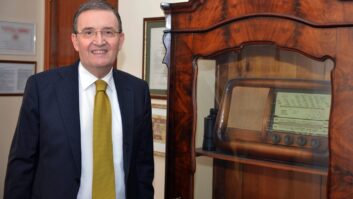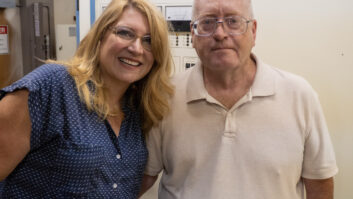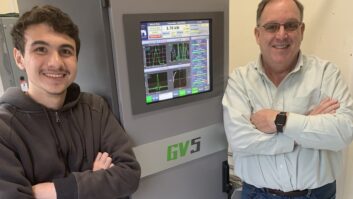
Congratulations to NIST station WWVB on its 50th anniversary.
The National Institute of Standards and Technology, part of the U.S. Department of Commerce, this month observed the anniversary of the radio station’s 1963 launch in Fort Collins, Colo. It published some super pix, here and on page 8, which I wanted to share with you.

“WWVB is best known today for broadcasting the time to an estimated 50 million radio-controlled clock radios, wall clocks, wristwatches and other timekeeping devices across the U.S. mainland,” the organization noted in a station bio.
“But back in 1963, the station had an entirely different audience, broadcasting standard frequencies at the high accuracy needed by satellite and missile programs. The time signal, added two years later, then became a popular means of synchronizing power plants to prevent brownouts, and coordinating analog telephone networks.”

WWVB’s signals are synchronized to NIST’s atomic clock ensemble in Boulder, which is calibrated by the NIST-F1 cesium fountain atomic clock, the U.S. civilian time standard.
Some interesting points about WWVB, according to the official fact sheet:

• Operating at only 60 kilocycles per second, it has a wavelength of more than 3 miles. The ground and the ionosphere form a huge duct to guide signals around the Earth.
• It received its call sign in 1960. The B probably stands for Boulder.
• It began official broadcasts at 4 kW, later increased to 13 kW. In 1999 it went to 50 kW, which helped lead to wide use of radio-controlled timepieces. Power is now 70 kW and the station uses a modified time code format that its leaders say boosts reception capability 100-fold and will encourage the inclusion of radio-controlled timing in a broader range of products like thermostats, refrigerators and sprinkler systems. We’ve reported on this initiative and will have more about it in coming months.
NIST this year also noted the 90th anniversary of high-frequency station WWV, which too is based at Fort Collins. WWV provides HF time and frequency signals, geophysical alerts and marine storm warnings that are used by hams, stopwatch and timer calibration labs, piano tuners and phone callers wishing to set timepieces manually.
WWV and WWVB seem to hold a special kind of appeal to some of us. I wonder why that is. What’s the romance? Comment at [email protected], attention Letters to the Editor.












